At this point, I had one last day in Milan, and I had already done pretty much everything on my list. That gave me a nice chance to have a relaxing day and get packed up without a rush. I'd say this trip turned out to be the perfect length -- sure, I could have cut a day and not done some of the stuff that didn't turn out to be all that exciting, but I didn't know in advance what things that would be. Anyway, if you've ever wondered how people move furniture in and out of old Italian buildings with tiny stairs and tinier elevators (if there's an elevator at all), apparently this is your answer: with a platform lift stretching up to the upstairs windows! I don't know how common this actually is since I've never seen it before, but it's certainly interesting.
I had various errands I needed to run before heading home, and up first was mailing home some postcards (which coincidentally arrived today, just over a month later). I decided to go to the main post office by the Duomo (mostly in the hopes that they would be more used to tourists there), which was probably a mistake since it took forever until I was actually called to a desk. (Italian post offices are super annoying because they do pretty much everything government-related and also serve as a bank, and it seems like they've forgotten that their main purpose is to be a post office. Plus you have to use an electronic kiosk to get a ticket and it requires you to pick from a massive list of categories, none of which are simple things like "buy stamps", in Italian, so I always end up just guessing what button to hit and hoping I'm close enough that I'll be assigned to the correct desk.) But at least the clerk didn't have any trouble getting me international stamps, unlike the people at the smaller post office in Rome last year. And the architecture here is super cool!
I had thought about heading back up to the roof of the Duomo, but it seemed a lot busier than when I did that a few days ago so I didn't feel like it. Instead, I decided it was time for a nice long ride on one of the 1920s trams, which I had only taken on short trips so far. For what it's worth, as cool as these trains are, the ride quality is just as terrible as on the slightly-older trams I rode in Rome last year, including the same air compressor under the floor that sounds (and shakes the car) like an idling engine.
The clear windows on these old trains are so much better than the tinted windows on modern trains! Here are some pictures of Cadorna since I was in too much of a rush to get them last time I was here.
The night before, my train got stuck at Certosa Station for quite some time due to the signal issues in the Passante. I noticed a couple things of interest while waiting there, the first of which is that the tram turnaround loop in front of the station, which is normally disused despite being practically brand new (built 2017 and seemingly never used in regular service) was in use due to construction further along the line. This was pretty cool since the lines here use some of the oldest trains in the fleet, a real contrast to the modern infrastructure and the 80s-futuristic station design. These contrasts are something I really love about Milan, which is full of architecture from all eras, unlike places like Rome and Venice where the architecture (while interesting) is largely frozen in time.
The second was that there was an Esselunga Superstore right by the station. I really like Esselunga -- their stores are a lot more interesting, design-wise, than most Italian grocery stores -- so I just had to check out this place (plus I had a long shopping list of groceries to bring home!).
I was thinking this would be a hypermarket, but it's more like an American-style supermarket with a mini-mall attached. I suppose if you add all the stores together, you'd have most of a Walmart Supercenter worth of products -- there's a clothing store, a cosmetics shop, an optical place, and a cafe. But I still need to visit a proper European hypermarket some day. (The trouble is that, just like in the US, they're normally way out in the suburbs.) This isn't going to be a full store tour, just a sort of mini-tour built into this blog post.
As is common in larger European grocery stores, the entrance takes you through a maze that forces you to walk through various departments (in this case, floral and produce) before you can get into the rest of the store.
Then once you get to the back of the store, you have to walk all the way back up front through a rather empty aisle. I'm guessing this is the seasonal section and was in transition from Valentine's to the next holiday (Easter?).
The decor here is the same 80s-looking design we saw a few days ago, including the same 70s-colored "Cucina Esselunga" logo. It seems like the vast majority of Esselungas out there look like this, though there is a more modern design that I've seen in some pictures.
The health and beauty section ("parafarmacia", which seems to refer to a drugstore ("faramacia") without an actual pharmacy) looks much more modern, if a bit boring. The LED-lit shelves look nice, but I wish there was a bit more color!
The frozen aisle has the same funny two-tiered cases that some European grocery stores in the US (think Aldi and Trader Joe's) have, albeit with open coffin cases on the bottom. I was a bit surprised to see the open frozen cases, since Europe tends to be ahead of the US on energy efficiency, but they go with the 80s look of this store!
Back up front, I really love the register lights, with their triangle-arrows and funky retro numbers. And check out how many checkouts this store has! That's another 80s throwback I wouldn't have expected from a store built in the 00s. Sadly, the number that were actually open is much more in line with 2025 standards.
At least there are self checkouts (which is what I used), along with a scan-as-you-go system that no one seemed to be using (sounds like what happened when Kroger tried to do the same thing). Considering how difficult the Kroger system was to use, I didn't feel like trying to figure out how to use one in a different language! And yes, these stores have those receipt scanner things that have started to pop up in high-theft stores in the US -- I'm not sure how long European stores have had them since this trip is the first time I've ever used self-checkouts in Italy, but I'm guessing they were here first considering that European stores had one-way entrance gates decades before they started showing up in the US.
If I had been hungry, I would have gotten something to eat from Bar Atlantic, which seems to be Esselunga's in-house cafe brand (bars in Italy are very much not the same thing as bars in the US, and are more like cafes or fast food places). It seems to be pretty popular!
The view along the front end reminds me a lot of the Crossroads Mall QFC, which I have tons of pictures of but of course I haven't posted any of them yet.
Anyway, newly loaded down with cookies and candy and all sorts of snacks, it was time to head back to the hotel to pack all of that and see if I had any room left to bring home even more. It's a good thing US airlines don't enforce carry-on weight limits, since I'm pretty sure I blew right past the limits European airlines have!
I still had a little space in my suitcases, so back to Gae Aulenti for more Esselunga shopping! And to get some daytime pictures, of course. Yes, those are Mario-themed Pringles ads -- not sure what the deal is with that.
In the time since I was here last, a whole Mulino Bianco village had popped up on the plaza. Mulino Bianco is an Italian packaged baked goods brand that makes pretty good stuff, especially compared to the sort of packaged baked goods you can get in the US. This is pretty cute -- too bad it wasn't going to open until a few days after I left.
I do love the architecture here. You don't see a ton of modern architecture in Italy!
Continuing to the north, the shopping center connects to the Biblioteca degli Alberi (Library of Trees), a park area that doesn't have nearly as many trees as the name would imply (I suppose it will be a bit more impressive once the trees have a few more decades to grow). Next to that is the Bosco Verticale (Vertical Forest), a pair of apartment towers with trees growing out of the balconies, which doesn't look all that impressive in the winter time with all the leaves off the trees.
Next stop on this modern architecture tour is Palazzo Lombardia, the government seat of Lombardy and one of the tallest buildings in Italy. It seems kind of crazy that the government had the money to build such an elaborate tower for themselves when you consider the state of other infrastructure in Italy...
I'm sure you can all see why I love this place so much. All it needs is some escalators! 😉 It's too bad the building is mostly closed off to the public, since it mostly hosts government offices instead of any sort of public services. Apparently there is an observation deck, but I'm not sure how you get there since all of the entrances to the building looked very visitor-unfriendly... I'll have to look into that more if I get a day with nice clear weather next time I go to Milan.
Right across the street is this not-so-interesting office building with very interesting red (and a little bit of white) neon all around the inside. Pretty cool!And I'm going to have to break this post here. I've spent two days writing this and I still didn't get through a whole day in Italy. Just a few more posts to go...






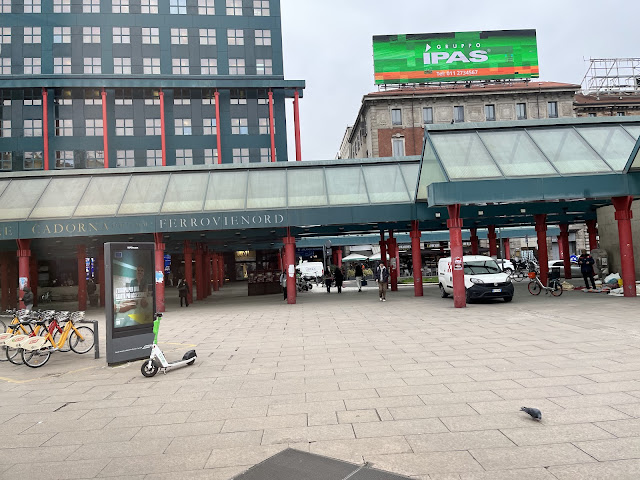







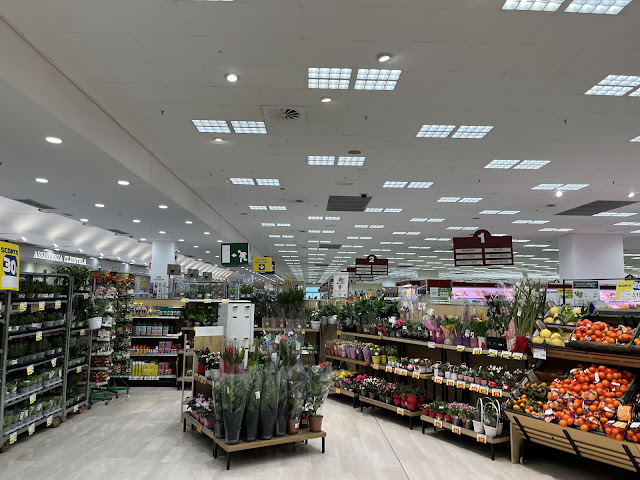

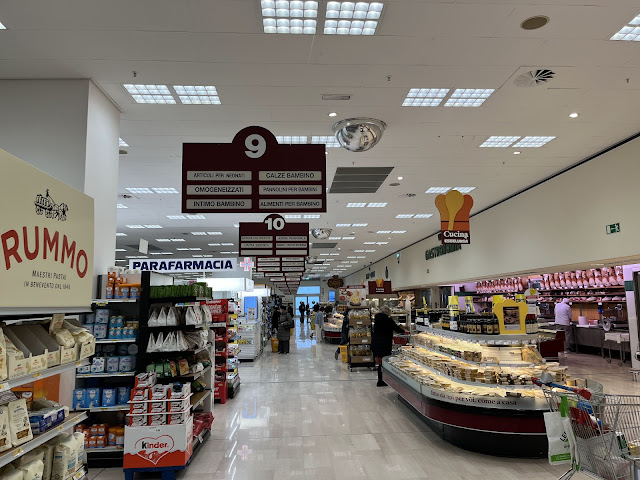













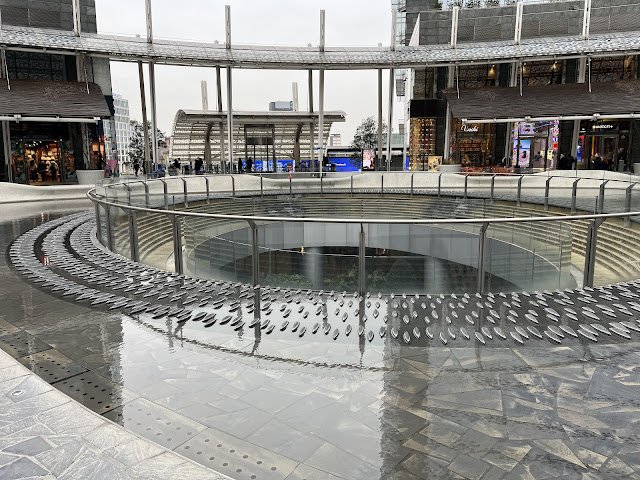
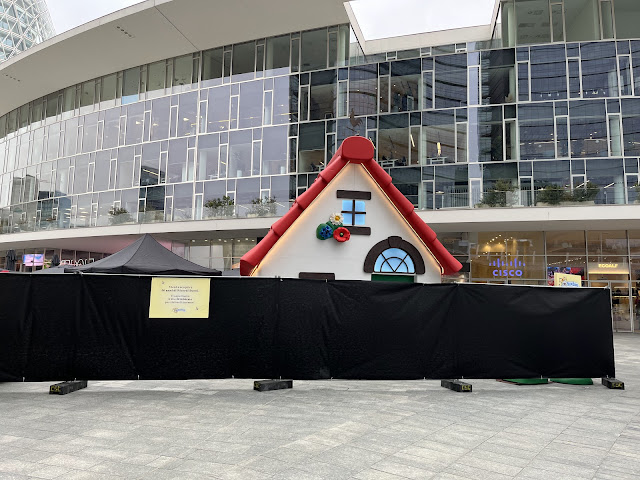

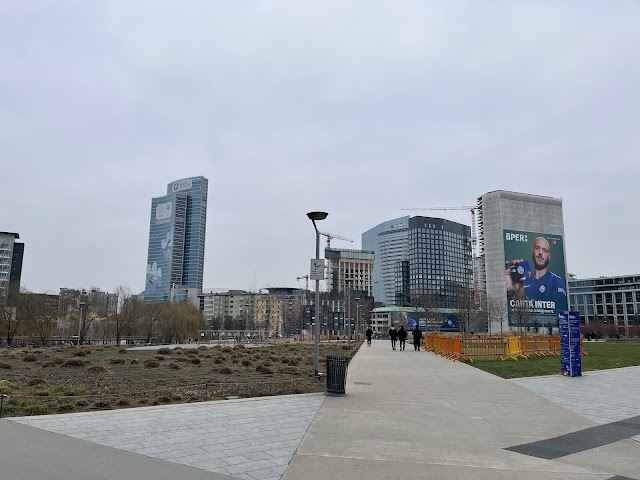






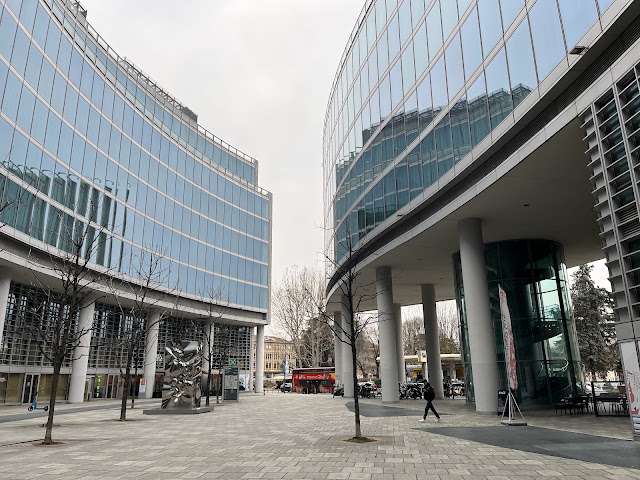


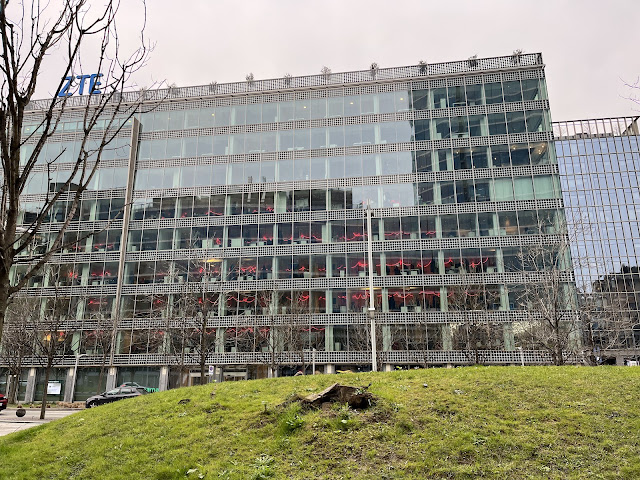
Believe it or not, the USPS used to have a postal banking system until 1967 and there have been attempts to try to bring back postal banking here. It probably goes without saying that those attempts have not gone very far. Link: https://en.wikipedia.org/wiki/United_States_Postal_Savings_System
ReplyDeleteI'm not sure if the Poste Italiane is fully privatized or only partially so. Most of Europe has privatized their postal operations, though most also include some kind of postal banking system which is increasingly becoming necessary since bank branch closures are often more of an issue there than here. I know that the EU's Maastricht Treaty provisions almost force member countries to privatize utilities and such, even ones where privatization would not be popular here (you probably know about that from buses, trains, and airport operations, all of which are generally privatized in Europe and not here). Then again, with Italy being Italy, they might be given a little more leeway on these things.
I know that my European friends are amazed that we have municipal-run buses and such here because they not only assume ours are privatized, but that they were privatized long before theirs. Such is not the case in most big US cities at least!
Superstore looks a bit like a new Market Basket store in New England. New England is often considered to be the home of American arts culture, at least higher forms of art, and we know about Italy and art. I'm not surprised that artistically-inclined cultures want 1980s-like supermarkets! Granted, there are some aspects of Superstore which are more 1980s than Market Basket, but not on the front end. Market Basket still has something like 15 registers open and no self-checkouts!
I knew the USPS once had banking functions, but for some reason I thought it was a lot longer ago than the 60s that they got rid of that!
DeletePoste Italiane is one of those pseudo-private companies that are so common in Italy (and I think many other European countries -- most didn't go all-in on privatization like the UK did) where it is technically a private company, but a large portion is owned by the government. Most of Italy's transit and airport operators are the same way, sometimes even being fully government-owned despite being incorporated as private businesses. I've never really understood the point of organizing things that way, apart from trying to look like they're going along with the attempts at forced privatization. The US doesn't really have this sort of arrangement, apart from Amtrak, kind of.
I haven't ever been to Market Basket, so I don't really have any American comparison for Esselunga! Market Basket sounds like an interesting chain, if I ever end up in that part of the country. Boston is somewhere I'd like to visit some day, but it's not really at the top of my list.
Boston is a neat place, and I think in many ways, it is a city which has moved in a very different direction than a lot of other cities, especially west coast ones. They've been able to maintain a strong focus on downtown Boston and the vast amounts of retail/malls downtown, which is a bit like Canadian cities (at least pre-2020, I don't know how things are in Canada now), which is quite different from a lot of the rest of the US. It feels like Boston is run a lot differently than a lot of other US cities.
DeleteBut, in reality, if you're going to New England (and you should!), you probably would rather visit places like Maine, New Hampshire, and Vermont. Maybe even the Adirondacks and the Hudson Valley in New York. There are a lot of similarities to the Pacific Northwest, but yet a lot of differences as well. The mountains, lakes, and shores are not as majestic out east as they are where you live, or what you saw in the Alps on this trip, but the scenery is still spectacular and there are a lot of historic buildings, streets, and so forth. I think you'd like it and I think you'd like the Mt. Washington cog railway, as expensive as it is. The weather on Mt. Washington is something wild, so it certainly makes up for it not being as big as the mountains over in your area. Assuming that all three are still open, you could go to North Conway, NH and experience Market Basket (a newer one), Shaw's, and Hannaford all within walking distance of each other!
The USPS is run somewhat independently of government and has some expectation of being self-sufficient in terms of budget, though really that is kind of silly given that the budget is not really of concern given the US Dollar is a floating currency. Things are a bit different with Eurozone members since they are not truly monetary sovereign countries anymore. Even in the Netherlands, as an example, the postal services have been privatized, but the private operator asks for significant government subsidies to maintain the service standards expected. So, yeah, I'm not sure if any country has truly privatized their postal services while still maintaining expected level of service for citizens and businesses. Of course, even though the Netherlands and Italy are both in the Eurozone, they have wildly different cultural expectations for things like national budgets!